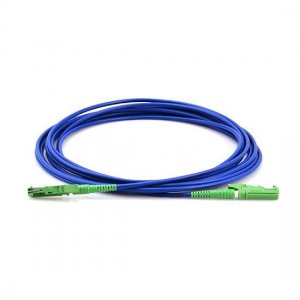
# Fiber Patch Cable: Essential Connectivity Solution for High-Speed Networks
## Introduction to Fiber Patch Cables
Fiber patch cables, also known as fiber jumper cables or fiber optic patch cords, are essential components in modern high-speed network infrastructures. These cables serve as the critical link between network devices, enabling seamless data transmission across various networking environments.
## Key Features of Fiber Patch Cables
Fiber patch cables offer several distinct advantages that make them indispensable in today’s digital landscape:
– High bandwidth capacity
– Low signal attenuation
Keyword: Fiber Patch Cable
– Immunity to electromagnetic interference
– Lightweight and flexible design
– Secure data transmission
## Types of Fiber Patch Cables
### Single-mode Fiber Patch Cables
Single-mode cables feature a small core diameter (typically 8-10 microns) and are designed for long-distance communication. They use laser light sources and are ideal for applications requiring high bandwidth over extended distances.
### Multimode Fiber Patch Cables
Multimode cables have a larger core diameter (50 or 62.5 microns) and are commonly used for shorter distances. They utilize LED light sources and are more cost-effective for local area network (LAN) applications.
## Common Connector Types
Fiber patch cables come with various connector types to suit different networking needs:
– LC (Lucent Connector) – small form factor
– SC (Subscriber Connector) – push-pull design
– ST (Straight Tip) – bayonet-style coupling
– FC (Ferrule Connector) – screw-on design
– MTP/MPO – multi-fiber connectors
## Applications of Fiber Patch Cables
Fiber patch cables find applications in numerous industries and settings:
– Data centers and server rooms
– Telecommunications networks
– Cable television systems
– Medical imaging equipment
– Industrial automation systems
– Military and aerospace communications
## Choosing the Right Fiber Patch Cable
When selecting a fiber patch cable, consider these important factors:
– Cable type (single-mode or multimode)
– Required length
– Connector types
– Performance specifications
– Environmental conditions
– Budget constraints
## Installation and Maintenance Tips
Proper handling and maintenance ensure optimal performance and longevity of fiber patch cables:
– Always protect the connectors with dust caps when not in use
– Avoid excessive bending (follow minimum bend radius guidelines)
– Keep connectors clean using proper cleaning tools
– Label cables clearly for easy identification
– Store unused cables properly to prevent damage
## Future of Fiber Patch Cables
As network speeds continue to increase and data demands grow exponentially, fiber patch cables will remain a fundamental component of network infrastructure. Emerging technologies like 5G networks, Internet of Things (IoT) devices, and cloud computing will further drive the need for reliable, high-performance fiber optic connectivity solutions.
Fiber patch cables represent the backbone of modern high-speed communication networks. Their superior performance characteristics make them the preferred choice for professionals seeking reliable, secure, and high-bandwidth connectivity solutions. By understanding the different types, applications, and proper handling techniques, network administrators can ensure optimal performance of their fiber optic infrastructure.